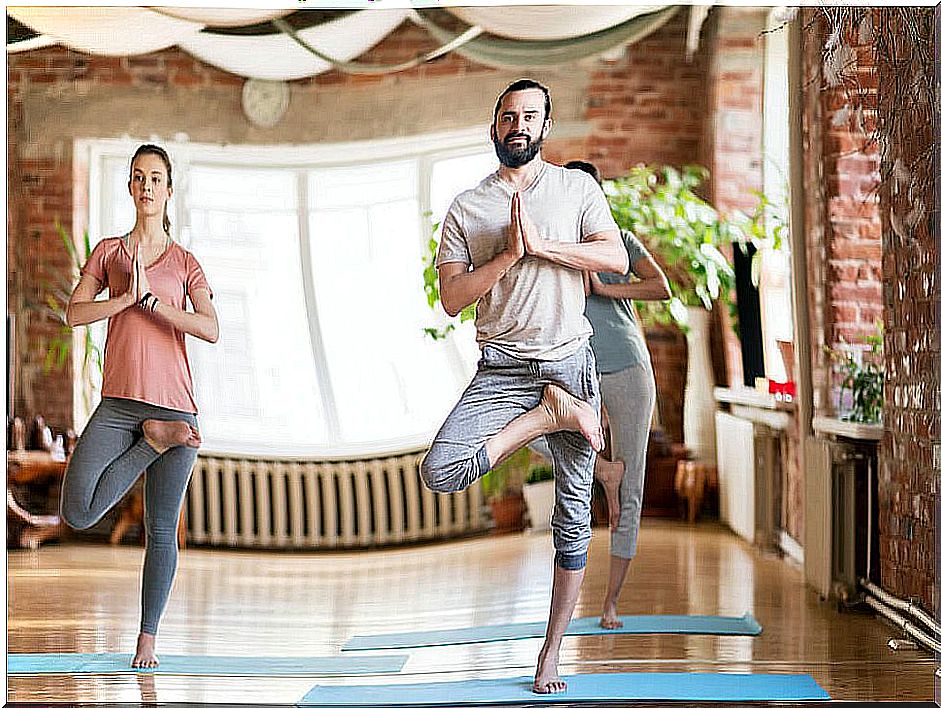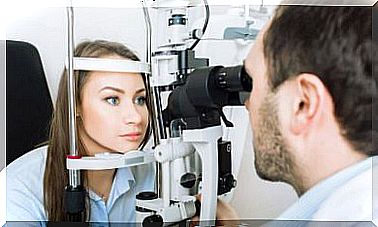Yoga Exercises For Scoliosis
Yoga exercises for scoliosis continue to attract the attention of patients suffering from this condition. Although they are not a substitute for the treatments prescribed by the doctor, they do seem to be a good adjunct to reduce pain and improve quality of life.
In fact, these benefits are backed by some research, which is said to also help correct curvature and reduce muscle wasting. The most important thing is to know how to practice them properly, preferably with the supervision of professionals.
What is scoliosis?
Scoliosis refers to a lateral deviation of the spine that can be in the shape of a C or S. It often occurs during the growth process before puberty and, as detailed by the Mayo Clinic, affects 3% of adolescents .
To date, the exact cause of this condition is unknown; however, it can occur due to birth defects, neuromuscular diseases, spinal injuries, infections, among others. In addition to the curvature of the spine, other symptoms can be:
- Shoulders that look misaligned
- One shoulder blade more prominent than the other
- One side of the waist appears higher than the other
- Uneven waist
- Ribs that stick out more to one side than the other
In some patients, scoliosis goes unnoticed and asymptomatic. However, many cases evolve over time until they become noticeable. Given this, and once the diagnosis is confirmed, the doctor may suggest several types of treatment such as:
- Immobilization devices
- Surgery (if it is a severe case)
- Physiotherapy
- Chiropractic manipulation

Yoga exercises for scoliosis: what are its benefits?
Yoga exercises are one of many treatment options for scoliosis. However, they are not a top-of-the-line option, but rather an add-on. Its practice appears to be beneficial in correcting abnormal curvature of the spine and muscle weakness in the area.
In a case report published in Global Advances in Health and Medicine , scoliosis patients who practiced a single yoga pose for 1 to 2 minutes a day, 6 days a week, significantly reduced spinal deviation by 6.8 month period.
In particular, by doing the lateral plank pose, patients were able to strengthen the quadratus lumbar of the lateral convex, transverse abdominals, obliques, and other muscle groups. This, in turn, helped reduce the curvature of the spine by 32%.
Now, data from a study published in the Journal of International Medical Research suggests that yoga, by helping to strengthen the core, helps reduce the severity of functional scoliosis, corrects posture and improves balance.
Yoga exercises for scoliosis: which are the recommended ones?
Yoga exercises recommended for scoliosis include postures that do not strain the spine. In general, they can be practiced from the comfort of home; however, it is advisable to start its practice under the supervision of a professional, since an inappropriate movement can worsen the problem.
1. Mountain pose or Tadasana
- First, stand on the mat, with your thumbs touching each other and the outside of your feet parallel.
- Relax your arms and hands at the sides of your body, palms facing up.
- Keep your neck straight and your chin elevated.
- Perform and deep breathing exercise. In doing so, the chest expands and the men open up giving a feeling of spaciousness.
- Close your eyes and take 10 slow, deep breaths.
2. Tree pose or Vrksasana
- From the position of the mountain, take your gaze to a fixed point to find balance.
- Next, raise your left foot toward your inner right thigh so that your toes are pointing to the ground.
- Hold the pose for 20 to 30 seconds and switch feet.

3. Side Plank Pose or Vasisthasana
- To start, go to the plank position. That is, lie face down on the tips of your feet and hands, with the rest of your body upright.
- Next, transfer the weight to the left hand and the end of the left foot, so that the right foot is on the left.
- Raise your right arm toward the ceiling and lift your hips off the floor. Hold for 15-20 seconds, take a deep breath, and move to the opposite side.
4. Cat Pose or Marjaryasana
- First, get into all fours facing the ground, with your spine in a neutral position.
- Make sure to put your hands just below your shoulders, with your fingers facing forward.
- The legs should be parallel and the toes facing backwards.
- From this position, take slow exhalations and simultaneously direct the tailbone downward. Move your navel towards your spine, tucking your chin in and looking at your knees.
- Now, breathe in by moving your tailbone upward, arching your back toward your belly. Raise your head and look straight ahead.
- Do 8-10 repetitions.
To get started in the practice of yoga, these poses are quite good. However, there are many more. To know them, it is good to consult a professional. Also, to enjoy more relaxing sessions, it should be done in a quiet space, away from noise and distractions.









